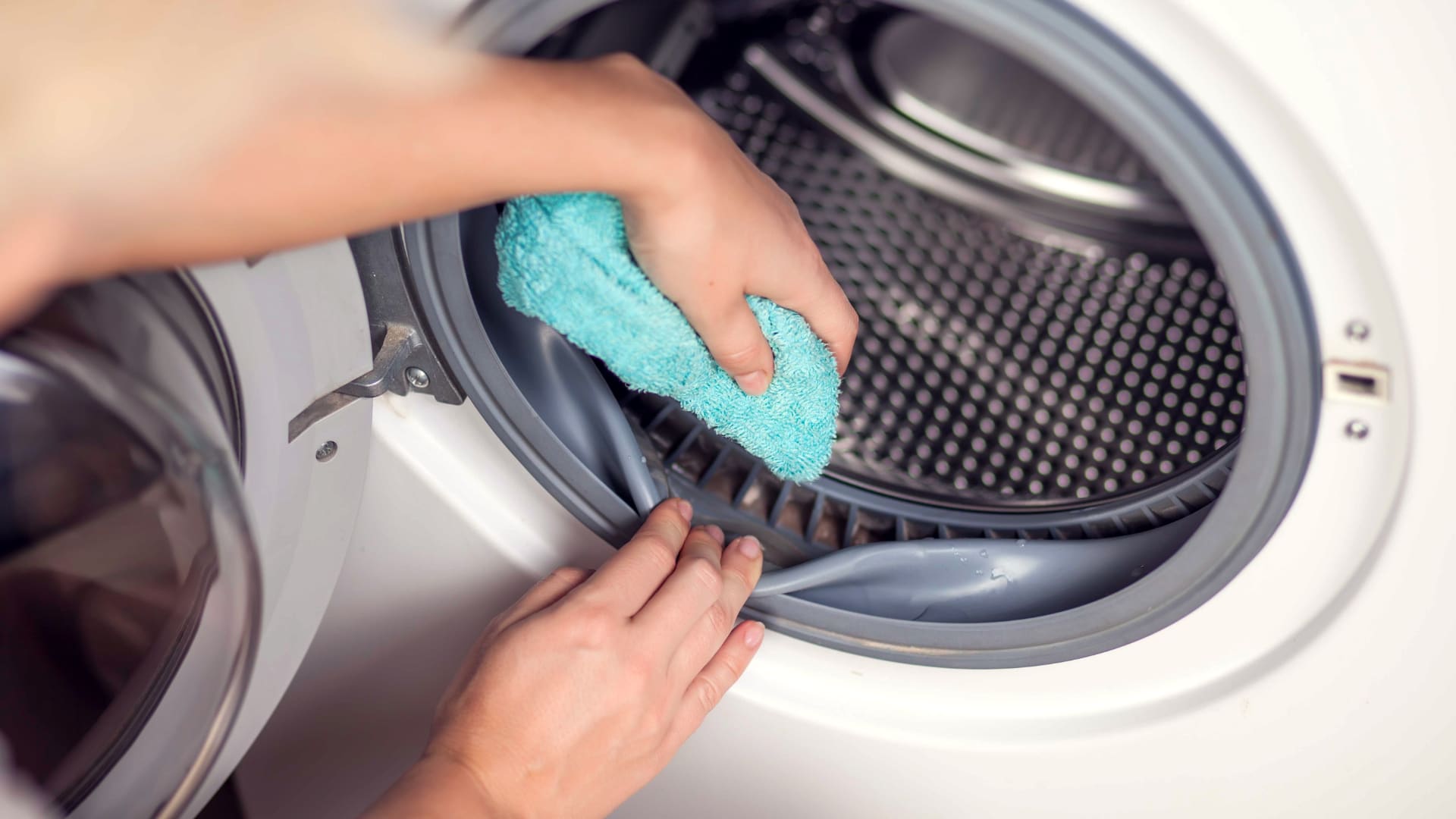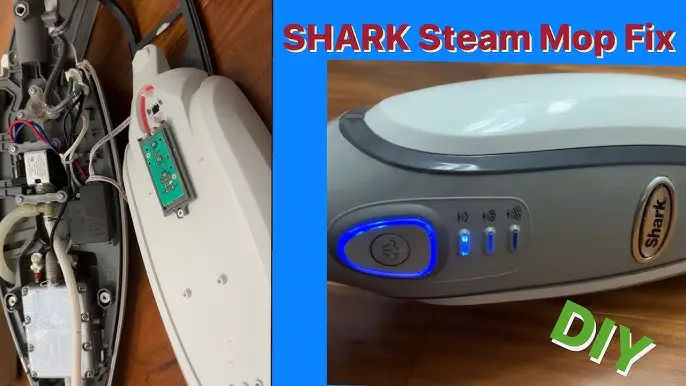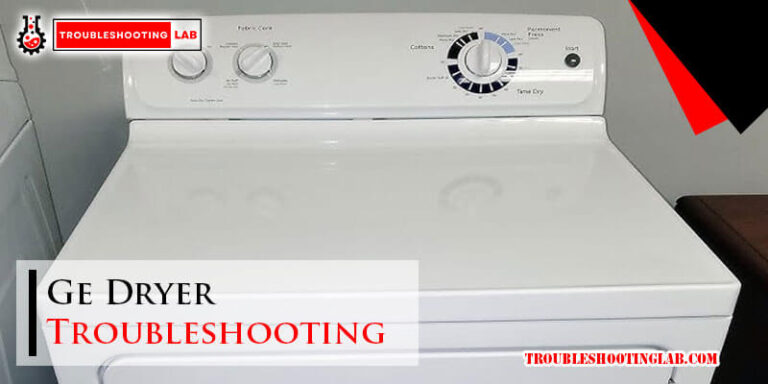Ge Clothes Washer Troubleshooting: Quick Fixes & Tips
Is your GE clothes washer giving you a hard time? You’re not alone.
Many people face the frustration of dealing with a washer that just won’t cooperate. Whether it’s a mysterious noise, a stubborn door, or a cycle that never seems to end, these issues can turn laundry day into a real headache.
But don’t worry, you’re in the right place. In this guide, we’ll delve into the common problems you might encounter with your GE washer and provide simple, step-by-step solutions to get it running smoothly again. Imagine the relief and satisfaction of solving the issue without the need for costly repairs or replacements. Stay with us, and let’s tackle these washer woes together, so you can get back to your routine with ease.
Common Washer Issues
Washing machines are essential in our daily lives. Yet, like any appliance, they can face problems. Understanding these issues helps in fixing them quickly. Below are some common problems with GE clothes washers. This guide will assist you in identifying and resolving them.
Washer Not Starting
If your washer won’t start, check the power source. Ensure the washer is plugged in securely. Verify the circuit breaker hasn’t tripped. Examine the lid switch and door latch. They must be closed properly for the washer to start. If the problem continues, the control board might be faulty. Consider consulting a technician.
Drum Not Spinning
A washer drum that doesn’t spin can be frustrating. First, inspect the load inside. An unbalanced load can prevent spinning. Adjust the clothes and try again. The drive belt could also be worn or broken. Check for any visible damage. If everything appears intact, the motor might be the issue. Professional help might be necessary.
Water Leaking
Water leaking from your washer can cause damage. Check the hoses for any cracks or loosening. Tighten any loose connections. Inspect the door seal for wear or tears. Replace it if damaged. Also, ensure the washer is not overloaded. Too many clothes can cause leaks. Regular maintenance can prevent future leaks.
Excessive Vibration
Excessive vibration can be noisy and harmful. Ensure the washer is level on the ground. Adjust the feet to stabilize it. Examine the load distribution inside. An uneven load can cause vibration. Rearrange the clothes evenly. If vibration persists, the shock absorbers might be worn out. Replacement may be needed.

Credit: fredsappliance.com
Simple Fixes For Common Problems
Your GE clothes washer is a trusty appliance, but sometimes it may present small issues that can disrupt your laundry routine. Before you call for professional help, there are some simple fixes you can try at home. These solutions not only save time but also help you understand your washer better. Let’s dive into a few common problems and their straightforward remedies.
Checking Power Supply
One of the easiest problems to fix is a washer that won’t start. Begin by ensuring that the power supply is intact. Check if the washer is properly plugged into the outlet. Sometimes, the cord can get dislodged, especially in busy laundry areas.
Inspect the circuit breaker as well. A tripped breaker can stop power from reaching your washer. Reset it if necessary. An unexpected insight—sometimes, simply flipping the switch can bring your washer back to life.
Inspecting Door Latch
If your washer isn’t spinning or draining, the door latch might be the culprit. Make sure the door is securely closed. A loose latch won’t allow the machine to operate properly.
Look for any obstructions or damage on the latch. You’d be surprised at how often a small piece of clothing can prevent the door from closing completely. Fixing this can often resolve the issue without much hassle.
Balancing The Load
Is your washer rocking back and forth or making excessive noise? The load might be unbalanced. Uneven weight distribution can cause the washer to vibrate, leading to potential damage.
Try redistributing the clothes evenly. Avoid overloading the washer—this can lead to inefficient washing and unnecessary strain. Consider this: a balanced load not only prevents damage but also improves wash quality.
Cleaning The Filter
Clogged filters can affect your washer’s performance. A blocked filter can lead to improper draining and even halt the washing cycle. Regular cleaning is key to maintaining efficiency.
Remove any debris or lint buildup from the filter. If you haven’t cleaned it in a while, you might be amazed at the amount of lint that accumulates over time. A clean filter ensures smoother operation and longer appliance life.
Have you faced any of these issues with your GE washer? What steps did you take to fix them? Share your experiences and insights—your story might just help someone else tackle their washer problems!
Dealing With Water Supply Issues
Facing issues with your GE clothes washer’s water supply? Check for blocked hoses or kinked lines. Ensure water valves are fully open and inspect filters for debris. Regular maintenance prevents future water flow problems.
Dealing with water supply issues in your GE clothes washer can be frustrating, but with a little know-how, you can often solve the problem yourself. When your washer doesn’t fill properly or takes longer than usual, it’s usually due to a water supply issue. Understanding the root cause can save you time and money on unnecessary repairs. Let’s dive into some practical troubleshooting steps.Inspecting Water Hoses
Start by checking the water hoses connected to your washer. Ensure they are not kinked or damaged. A twisted hose can restrict water flow, affecting the washer’s performance. Look for any visible leaks or cracks in the hoses. Replace any hose that shows signs of wear. You’d be surprised how often a simple hose replacement solves the issue. It’s also wise to ensure that the hoses are tightly connected to both the washer and the water supply. Loose connections can lead to leaks or insufficient water flow.Checking The Water Inlet Valve
The water inlet valve is crucial for controlling the water flow into your washer. If it’s faulty, your washer might not fill correctly. Listen for any unusual noises coming from the valve area. Strange sounds often indicate a malfunction. If you suspect a problem, the valve may need to be cleaned or replaced. In some cases, debris can clog the valve. Disconnect the hoses and inspect the valve screens for any blockages. Cleaning them might just do the trick.Addressing Low Water Pressure
Low water pressure can cause your washer to fill slowly. Check the water pressure at your home to determine if it’s the source of the problem. Consider if other appliances are running simultaneously. Multiple devices using water can reduce the pressure reaching your washer. Try running your washer at a different time to see if it helps. If low pressure persists, it may be worth consulting a plumber. They can provide solutions tailored to your specific plumbing setup. Have you encountered any of these issues before? Sometimes the simplest checks can solve what seems like a complex problem. Share your experiences or questions in the comments!Solving Drainage Problems
Dealing with drainage problems in your GE clothes washer can be frustrating. A washer that won’t drain properly can leave clothes soggy and lead to larger issues. Tackling these problems yourself can save you time and money, and it’s often easier than you might think. Let’s dive into some practical solutions to get your washer draining like new again.
Unclogging The Drain Pump
The drain pump is crucial for removing water from your washer. If it’s clogged, your washer won’t drain properly. Begin by unplugging your washer for safety. Locate the drain pump, usually found at the bottom front of the machine.
Check for any visible debris or small objects like coins or buttons that might be blocking it. Remove any obstructions carefully. If you’re unsure, consult your washer’s manual for specific guidance on accessing and cleaning the drain pump.
Ensuring Proper Drain Hose Position
The position of your drain hose can affect drainage. If it’s kinked or placed too high, your washer might not drain correctly. Make sure the hose is straight and free of kinks.
Position the hose at the recommended height, usually between 30 and 96 inches from the floor. This allows gravity to assist in proper drainage. Adjustments here can often solve drainage issues quickly.
Clearing Blockages
Blockages can occur in the drain pipe or hose, leading to poor drainage. Disconnect the drain hose and check for any blockages. You can run water through it to ensure it’s clear.
If the blockage is deeper in the pipe, a plumber’s snake can be useful. A clean drain path ensures water exits smoothly. Do you have other DIY tips for handling drain blockages?
With these simple steps, you can address most drainage problems in your GE washer. Don’t hesitate to take action—your perfectly drained laundry awaits!
Handling Error Codes
Handling error codes in your GE clothes washer can be a daunting task. These codes are the washer’s way of telling you something is wrong. Understanding them can save time and money. In this section, we will break down common error codes. We’ll also discuss when it’s best to call a technician.
Understanding Common Error Codes
Common error codes help identify specific issues in your washer. For example, “E1” often indicates a water supply issue. The “E2” code might mean the drain is clogged. Knowing these codes makes troubleshooting easier. You can find a list of these codes in the user manual. Always start by checking these codes before taking further action.
Resetting The Washer
Sometimes, resetting the washer can clear error codes. To reset, unplug the washer for a few minutes. Plug it back in and restart the machine. This simple step can solve many minor issues. If the error code persists, further investigation may be necessary.
When To Call A Technician
If error codes don’t clear, a technician might be needed. Persistent issues could indicate a more serious problem. Electrical faults or mechanical failures are best handled by professionals. Attempting repairs yourself can void warranties. Always call a technician for complex issues.

Credit: www.youtube.com
Maintenance Tips
Keeping your GE clothes washer in top condition doesn’t have to be complicated. Regular maintenance can prevent many common issues and extend the life of your appliance. In this section, we’ll cover essential maintenance tips that will help you keep your washer running smoothly. Let’s dive into some actionable steps you can take to keep your washer in great shape.
Regular Cleaning
Cleaning your washer may seem like a chore, but it’s crucial for maintaining its efficiency. You should clean the drum and dispenser regularly to avoid detergent build-up and unpleasant smells. A simple mix of water and vinegar can be an effective cleaning solution. Run an empty cycle with this mix once a month. This can help keep the inner workings of your washer free from residue.
Consider what happens if you neglect this step. Your clothes might not come out as fresh, and you could face costly repairs down the line. Regular cleaning ensures that your washer performs at its best, saving you money and hassle.
Inspecting Rubber Seals
The rubber seals on your washer play a vital role in preventing leaks. Check them frequently for signs of wear and tear. A small tear can lead to water escaping, causing damage to your floor. If you notice any cracks or stiffness, it might be time to replace them.
Are you aware of the potential damage a faulty seal can cause? A few minutes spent inspecting them can save you from a much bigger headache. Make it a habit to check them every few weeks. This simple step can keep your washer functioning properly and your laundry room dry.
Preventing Mold And Mildew
Mold and mildew thrive in damp environments, and your washer is no exception. Leave the door slightly ajar after each use. This allows air to circulate and helps dry out any remaining moisture. Another tip is to wipe down the door and seals after each wash.
If you’ve ever dealt with mold, you know it’s not just an eyesore—it can also affect your clothes. Preventing mold and mildew is as simple as giving your washer some breathing room. Consider this: would you rather spend a few seconds now or deal with mold later?
By following these maintenance tips, you can ensure your GE clothes washer remains a reliable part of your home. Regular cleaning, inspecting rubber seals, and preventing mold are all steps that you can easily incorporate into your routine. Are you ready to give your washer the care it deserves?
When To Seek Professional Help
Experiencing repeated issues with your GE clothes washer might signal a need for expert assistance. Strange noises, persistent leaks, or unresponsive controls often require professional diagnosis. Trusting a qualified technician ensures proper repairs and prevents future complications.
When your GE clothes washer acts up, it’s frustrating. Some issues you can fix yourself, but others need a professional touch. Knowing when to seek help saves time and prevents further damage. This section guides you through identifying severe issues, choosing a reliable technician, and understanding cost considerations.Identifying Severe Issues
Listen for unusual noises. Grinding sounds or loud banging signal serious problems. Check for leaks. Water pooling around the washer indicates internal damage. If the washer won’t start, it could be electrical. Persistent error codes mean deeper issues. These signs need a professional.Choosing A Reliable Technician
Research technicians in your area. Read reviews online. Ask for recommendations from friends. Check for certifications. A certified technician knows GE models well. Verify their experience with your washer type. Ask about warranties on repairs. Good technicians stand by their work.Cost Considerations
Understand repair costs upfront. Request a quote before work begins. Compare prices from multiple technicians. Consider the age of your washer. Older models might cost more to repair. Sometimes, replacing the washer is cheaper. Factor in service call fees. Budget for unexpected expenses.
Credit: www.ifixit.com
Conclusion
Troubleshooting your GE clothes washer can save time. Start with simple checks. Inspect power connections and settings. Listen for unusual noises. Check for leaks or blockages. Clean filters regularly. These steps often solve common problems. If issues persist, consult the user manual.
Seek professional help if needed. Regular maintenance prevents future breakdowns. Ensure your washer stays efficient. Clean clothes depend on a well-functioning machine. Remember, keeping your washer in good shape is key. Happy washing!






